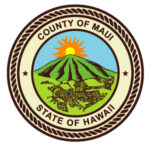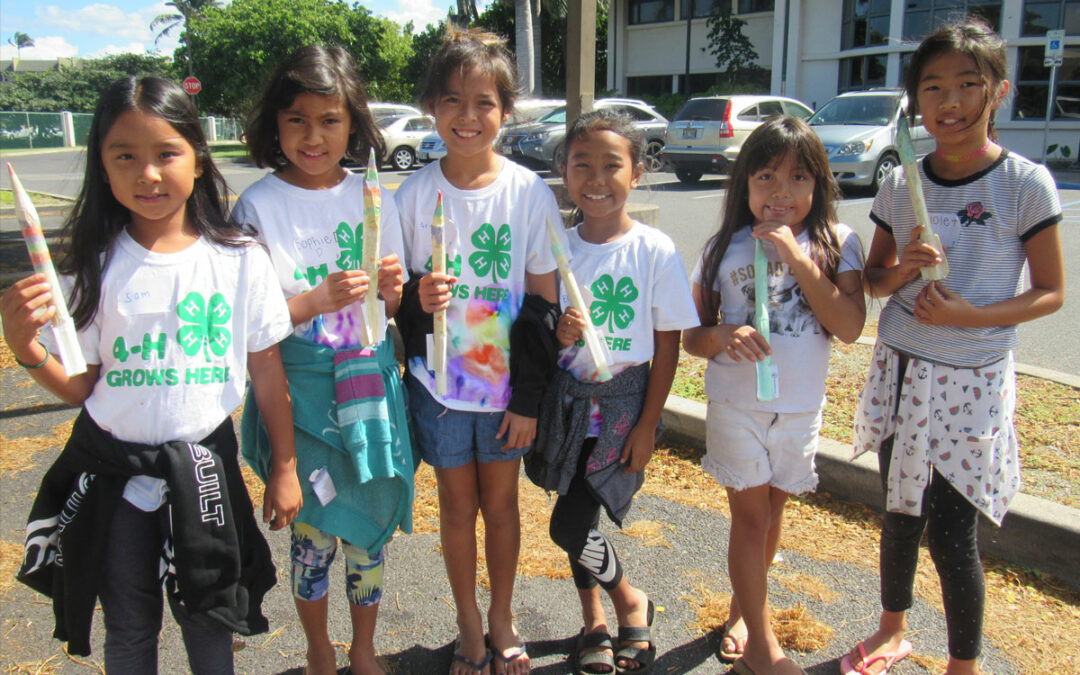
Jan 16, 2019 | Innovation
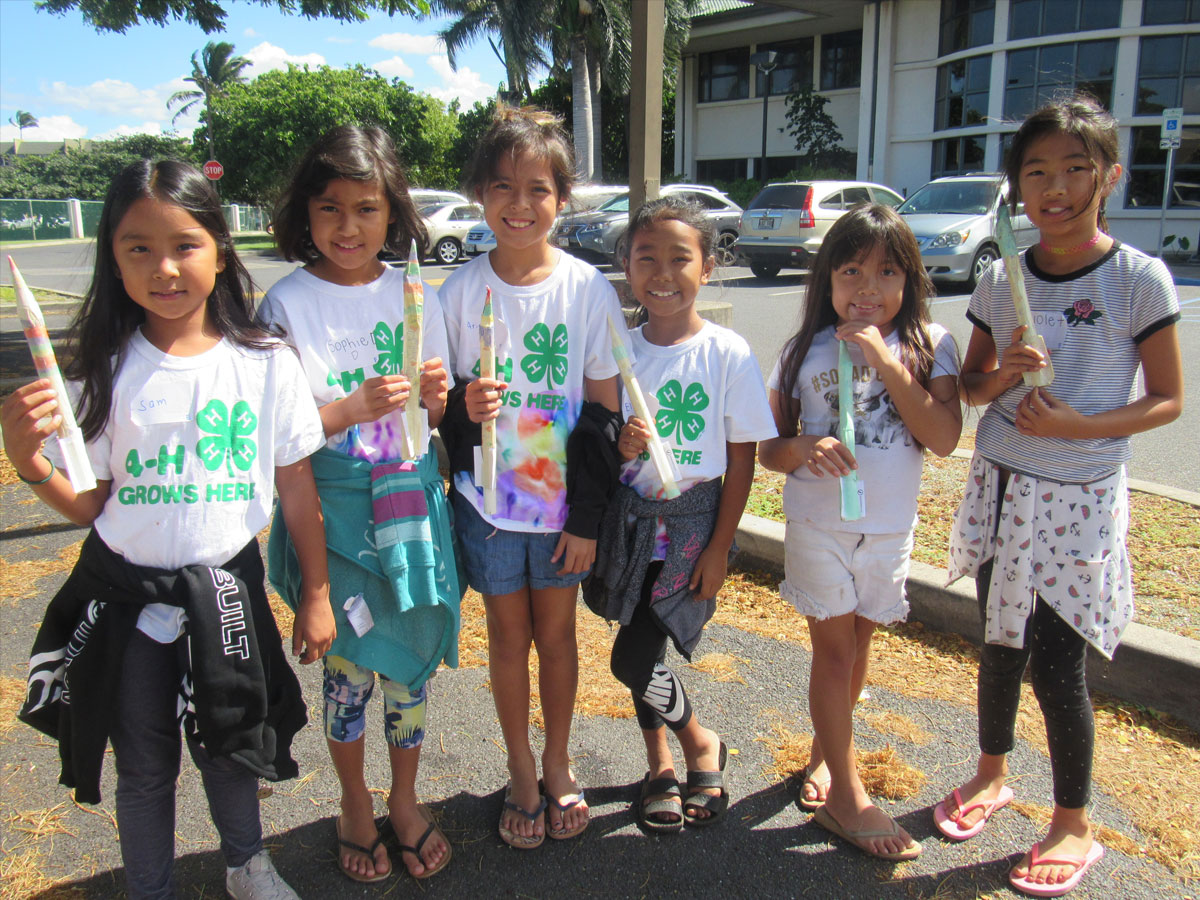
A recent grantee of Maui Economic Development Board’s (MEDB) Ke Alahele Education Fund, Maui County 4-H Leaders Organization, provided a STEM (science, technology, engineering, mathematics) workshop for 4-H youth members using a hands-on learning approach.
“In partnership with Maui Makers, the two activities within the workshop used inquiry-based learning to engage the youth by incorporating STEM components such as aerodynamics, electricity, and engineering design,” explained Wendy Taomoto, 4-H club leader. “Additionally, invited professionals in the STEM field presented a discussion on career options and opportunities for our youth.”
Experts from the Maui Makerspace program acted as content specialists and presenters for the two experiments. “The Maui County 4-H program has worked with us in the past on an earlier project that introduced youth to the makerspace format and focused on skill building such as soldering and construction,” said Laura Ulibarri from Maui Makers. “Today’s event consisted of building and launching rockets and hands-on experiments with electricity.”
The paper rocket activity began with a brief introduction to the principles of aerodynamics. Participants used a basic design template for building paper rockets and then launched the rockets for testing, thereby gaining immediate feedback on how design modifications affect the height of their rocket flight. “Launching was fun,” said Kaitlin, an 8th grader from Kalama Intermediate School. “We were challenged to do something we didn’t think we could do.”
The electrical conductivity experiment started with a brief introduction to the principles of electric current. Sophia, a Maui Waena Intermediate School 8th grader explained, “We built and tested electrical meters that allowed us to determine which materials conduct electricity. By measuring how well different materials behave, we started to notice patterns in what acts as a conductor and how electricity flows from one thing to another.”
Nancy Ooki, University of Hawaii Cooperative Extension Educator for 4-H and Youth Development, concluded, “Our relationship with MEDB and Women in Technology has allowed us to offer STEM programs for more than a decade. We look forward to many more of these events in the future.”
We thank MEDB’s Ke Alahele Education Fund for their grant and Maui Makers for providing STEM opportunities to our Maui County 4-H members. These events assist them in developing life skills needed to become contributing members of the community.
Wendy Taomoto, 4-H Club Leader

Nov 14, 2018 | Innovation
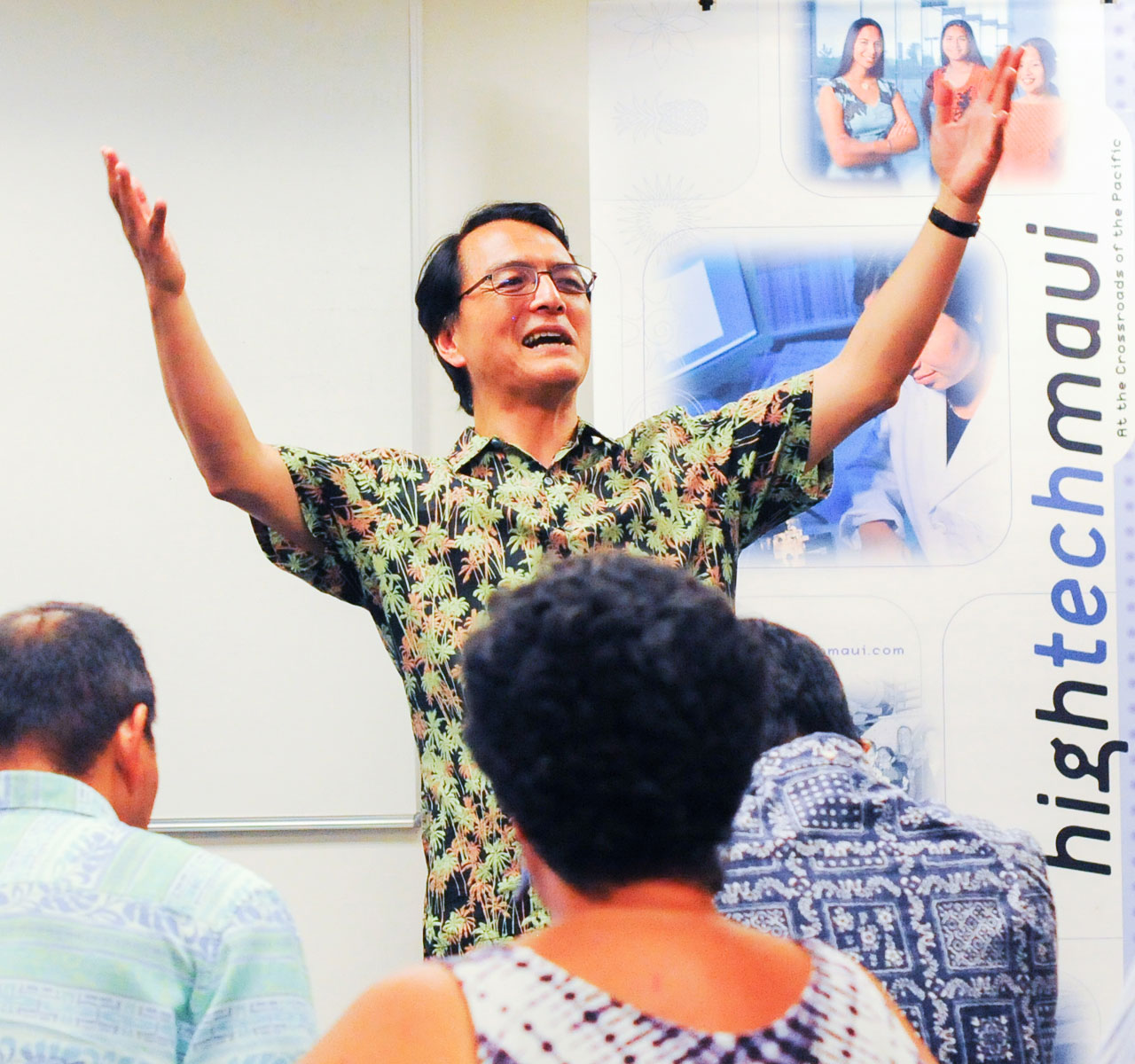
Maui Economic Development Board (MEDB) recently held an informal public event, Maui TechOhana@Cohana, featuring Dr. David Ai, Director, Office of Innovation and Commercialization and Chief Innovation Officer of the University of Hawaii (UH) System. Maui TechOhana meetings provide an informal networking opportunity open to anyone interested in Maui’s technology industry.
“The TechOhana meetings are a great opportunity to share views and thoughts in an open forum,” said Gerry Smith, MEDB Director of Business Development. “The reason MEDB has these events is to offer presentations on relevant topics in business and technology, followed by the opportunity to talk with others with similar professional interests.”
Dr. Ai detailed how the University of Hawaii plans to work with local constituents to promote innovation and entrepreneurship throughout the state. An international expert in management and business administration, Ai has more than 20 years of experience in various positions with large corporations and venture companies. In his UH position, he is responsible for the protection of intellectual property and UH-developed technology transfers and assets.
“I am thrilled to join the University of Hawaii System, and to help drive the innovation agenda with colleagues on 10 campuses– placing the research institutes under one umbrella,” said Ai. “Hawaii has a long and proud history of diversity, which is the most important ingredient of innovation.”
Pamela Norris, an entrepreneur and TechOhana participant, commented on the presentation which outlined Dr. Ai’s vision for his newly formed Departments within the UH system. “He brings a wealth of knowledge and broad practical experience to his position,” Norris said. “Ai’s vision is to upgrade the University’s ability to commercialize research results by students and faculty, in collaboration with community businesses. Businesses can apply for government grants jointly with a university faculty member who may be interested in the endeavor. Moreover, leaders in the community can offer opportunities to apply classroom knowledge to real life business challenges where they partake in community solutions.”
Maui TechOhana meetings will resume in the new year. Learn about these events by signing up for news and updates at medb.org
I am thankful for Maui TechOhana which is presented by MEDB, the County of Maui, Mayor’s Office of Economic Development, and the Hawaii Technology Development Corporation. The meetings create opportunities for people to come together, learn, find inspiration, and make new friends.
Dr. David Ai, Director of the Office of Innovation and Commercialization and Chief Innovation Officer of the University of Hawaii System
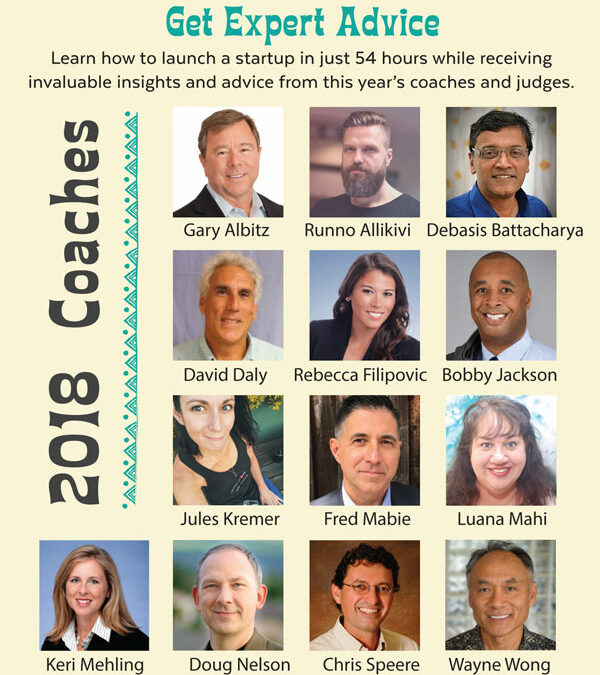
Nov 7, 2018 | Innovation
Startup Weekend Maui is on November 16-18. Learn how to launch a startup in just 54 hours while receiving invaluable insights and advice from this year’s coaches and judges.
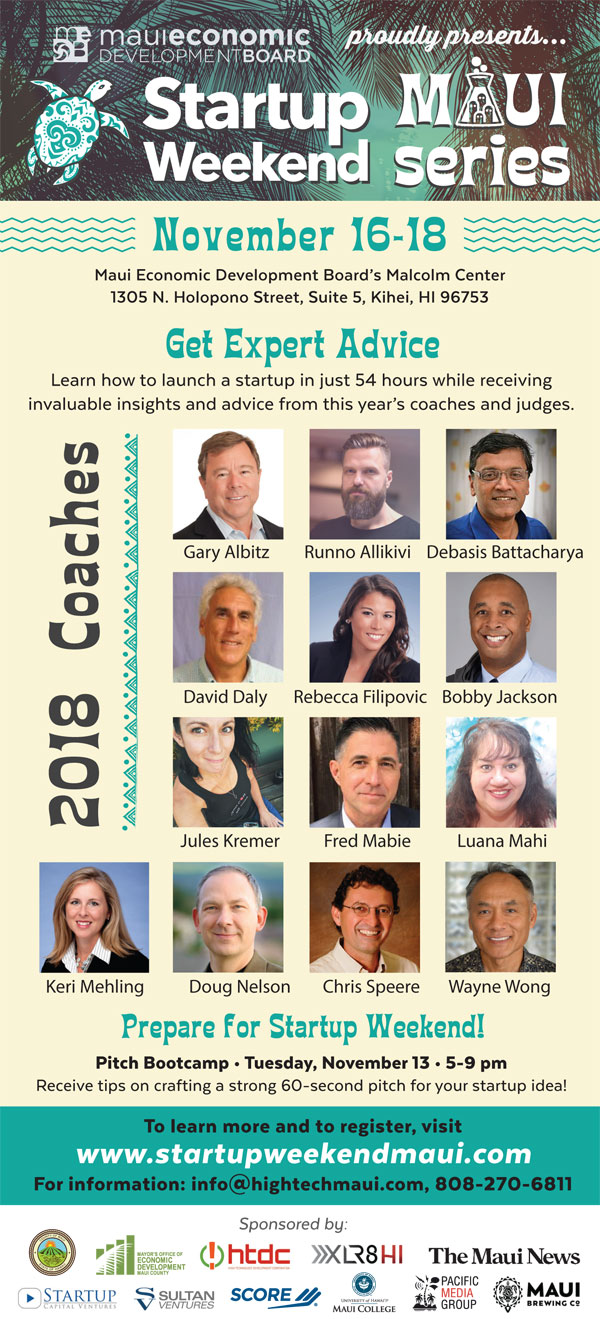
Coaches
- Gary Albitz, FocalPoint Business Coach and Lecturer UH Maui College
- Runno Allikivi, Head of Scandinavia at Funderbeam
- Debasis Battacharya, Assistant Professor, UH Maui College
- David Dal, BDC Director, MEO, Inc.
- Rebecca Filipovic, Attorney, McKeon Sheldon Mehling
- Bobby Jackson, Business Coach, RedRidge Consultants
- Jules Kremer, Technical Project Manager at Google
- Fred Mabie, Faculty member – UH Maui College, ABIT
- Luana Mahi, Owner, Principal Broker, Kismet Brokerage; President of Maui Food Technology Center
- Keri Mehling, Attorney & Partner, McKeon Sheldon Mehling
- Doug Nelson, President, Kinection
- Chris Speere, Site Coordinator,UH Maui College’s Maui Food Innovation Center
- Wayne Wong, Director, Hawaii Small Business Development Center – Maui Center
Judges
- Virendra Nath, President HDEP International
- Michael Powells, Founder Splash Inc.
- Teena Rasmussen, Director of the Mayor’s Office of Economic Development (OED)
Get ready!
Prepare for Startup Weekend Maui with Pitch Bootcamp, Tuesday November 13. Get tips to craft a strong 60-second pitch for your startup idea!
For more information and to register, please go to www.startupweekendmaui.com
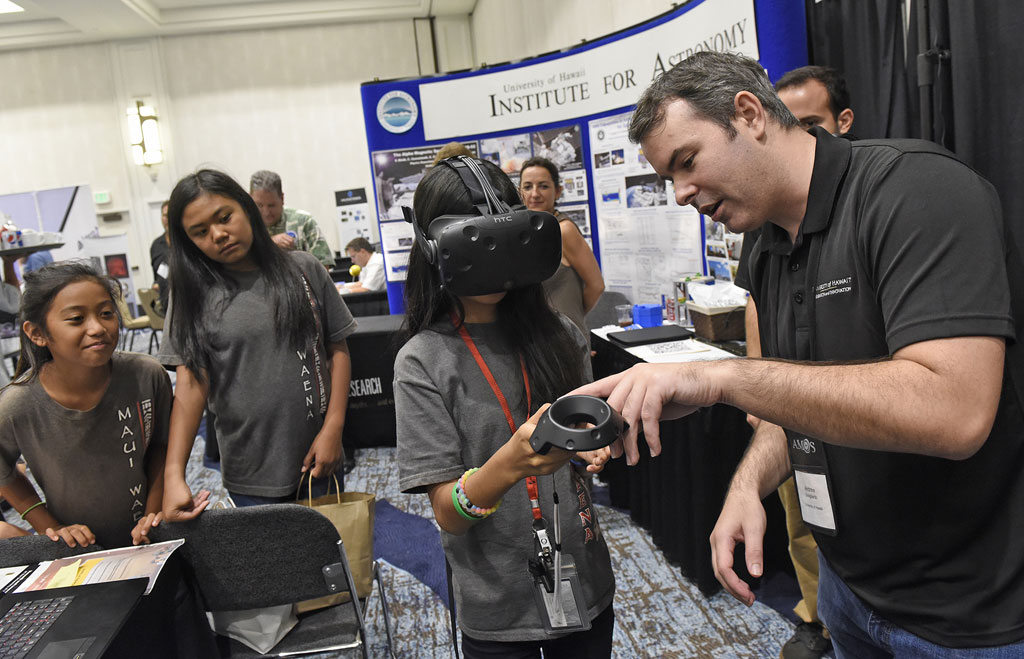
Oct 31, 2018 | Innovation

The 17th Annual Advanced Maui Optical and Space Surveillance Technologies (AMOS) Conference was held on September 20-23 at the Wailea Marriott Resort and Spa with a record-breaking attendance of over 670 participants from 18 countries. A program of the Maui Economic Development Board (MEDB), AMOS is the premier technological conference in the nation devoted to Space Situational Awareness (SSA), knowledge of objects in orbit around the Earth. Over 100 technical papers were presented along with featured speakers, poster sessions, exhibits and short courses in the fields of telescope optics, adaptive imaging, and astrodynamics.
Graduate and undergraduate students Andrew Guagliardo and Ryan Theriot from the University of Hawaii Manoa Laboratory for Advanced Visualization and Applications (LAVA) developed
new ways to visualize big data for satellite technology. “We exhibited our program called SatWatch, a virtual reality exploration of satellite orbits around Earth,” Guagliardo explained. “By pulling publicly available data from the Celestrak website, SatWatch is able to create a predictive model of orbits for a wide variety of satellites. SatWatch is an example of a complex dataset represented in an intuitive way, allowing users to easily understand satellite orbits in an interactive visualization environment.”
Maui middle school students participated in hands-on STEM (science, technology, engineering, and mathematics) activities during the Space Exploration Student Session at AMOS. They were introduced to space technologies via exhibits and science projects tailored especially for them.
“I enjoyed learning and talking to the experts at the AMOS Conference,” said Czerena Martinne Boyle, Maui Waena Intermediate School 8th grader. “My favorite booth was SatWatch, a virtual reality exploration of satellite orbits around the Earth. Through the virtual reality headset, I got to explore SSA data of numerous satellite orbits. These satellites make a big impact on the community and in the world for national security, internet, banking, telephones, television, navigation, scientific exploration and more.”
Seeing satellites orbit the earth through a virtual reality headset was an amazing experience!
Czerena Martinne Boyle, Maui Waena Intermediate School, 8th grade
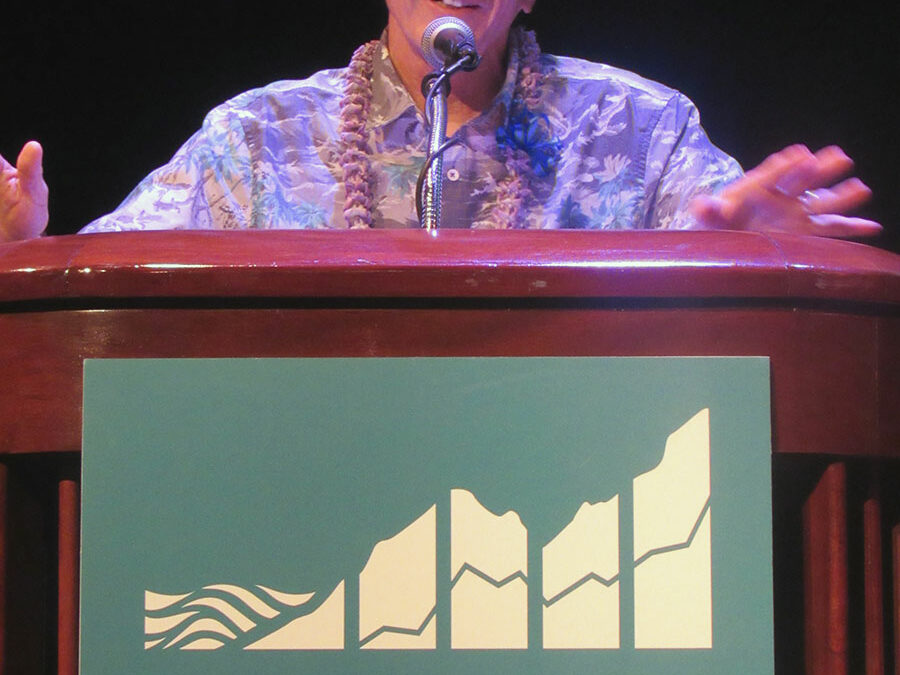
Sep 26, 2018 | Innovation
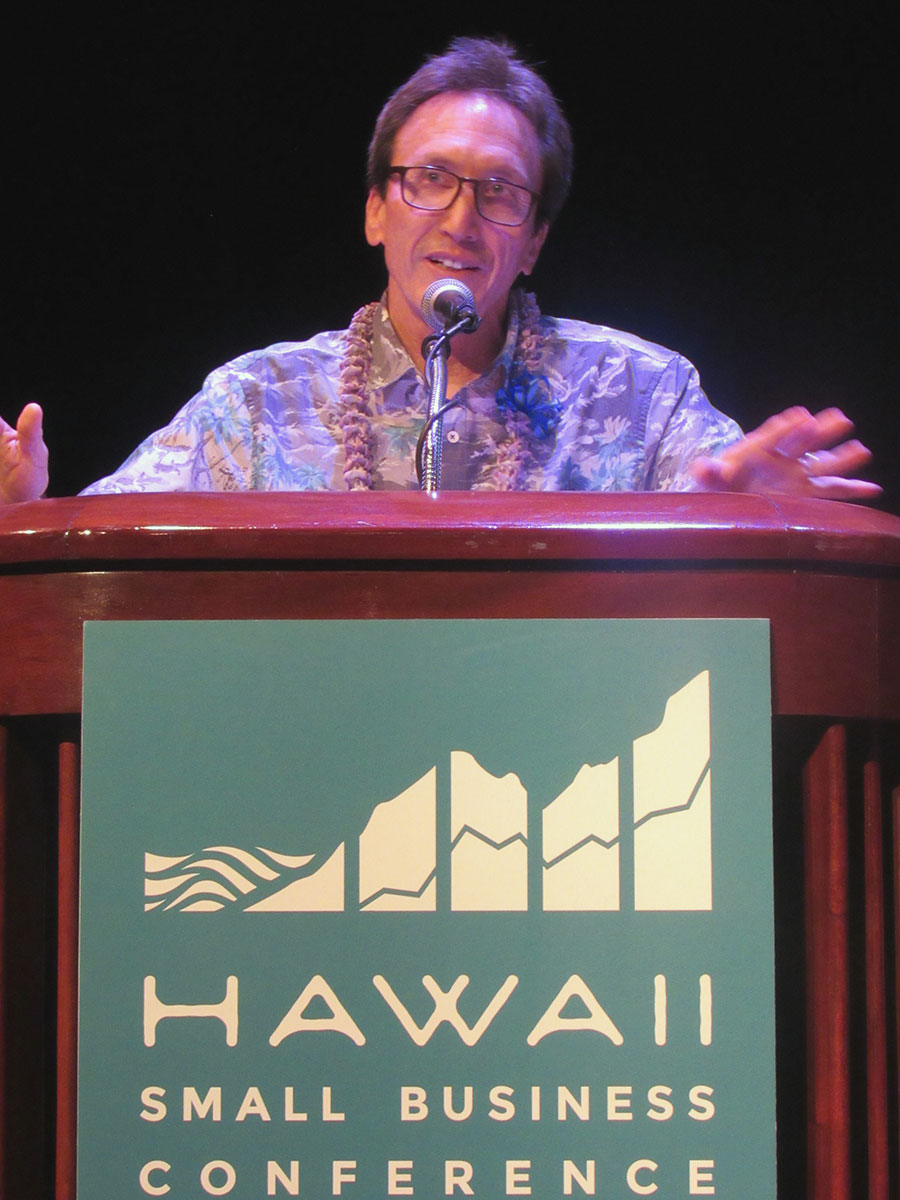
Kim Ball, a speaker at Maui Economic Development Board’s 2nd annual Hawaii Small Business Conference (HSBC), is a pioneer of the surf sports industry on Maui. Ball, who selflessly contributes to the betterment of the Maui community, talked story at the HSBC on Innovation: Learning from the Past, Creating the Future. “I’ve been in business for 36 years on Maui and believe in the importance of honesty and integrity,” Ball said. “Do business the right way, be nice, and get involved with the community.”
In 1985, Ball organized Maui’s first contest for board sailing known as the Kanaha Wind Slalom. Today, the world-renowned event, called the Maui Race Series, annually brings hundreds of windsurfers to Maui. “Windsurfing was just becoming popular. It was the fastest growing sport in the world,” said Ball. “The races were something for windsurfers to do in the summer when the north shore was flat. The first year, we had guys on asymmetrical wave boards, and every other kind of board and sail. But gradually it got a little more serious, and before we knew it, we had the best slalom racers in the world competing in our amateur races.”
Ball’s stores, Hi-Tech Maui and Shapers, represent the largest selection of boards on the island, including surfboards, stand-up paddle boards, windsurfing boards, skateboards and snowboards, as well as clothing, surf wear and protective gear. He clearly has his finger on the Maui sports scene and the changes made over the years. “It never ceases to amaze me to see the innovations that Maui guys have come up with to ride waves.”
While organizing several surf meets a year, Ball also worked to have high school surfing recognized and sanctioned as an official sport activity. Additionally, he was instrumental in developing amateur wrestling on Maui and is coordinator of the league which has grown to 11 clubs and 700 wrestlers. “I went to one Lahainaluna High School wrestling practice in 1980, and the athletic director asked me if I wanted to help coach,” he said. “I thought, I can help for one year. Look what happened!”
Years ago, the Maui News named me as one of their People That Made A Difference and in 2009 the Lahaina News named me Sportsman of the Year. Those honors are very dear to me.
Kim Ball, Owner, Hi-Tech Maui and Shapers
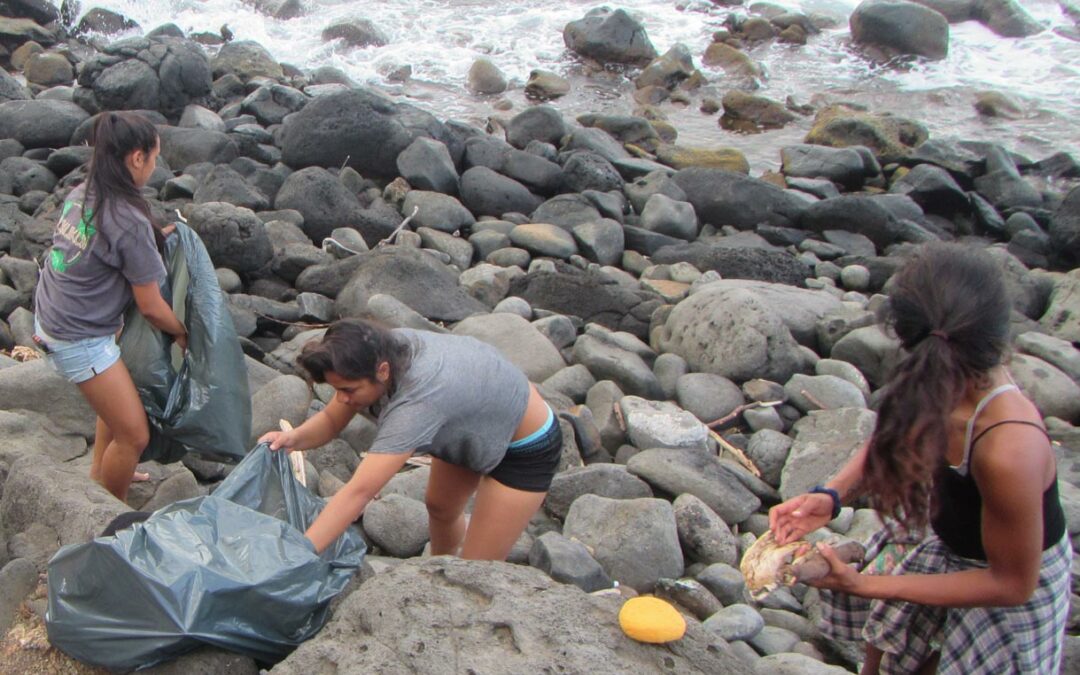
Aug 15, 2018 | Education, Innovation, Stemworks
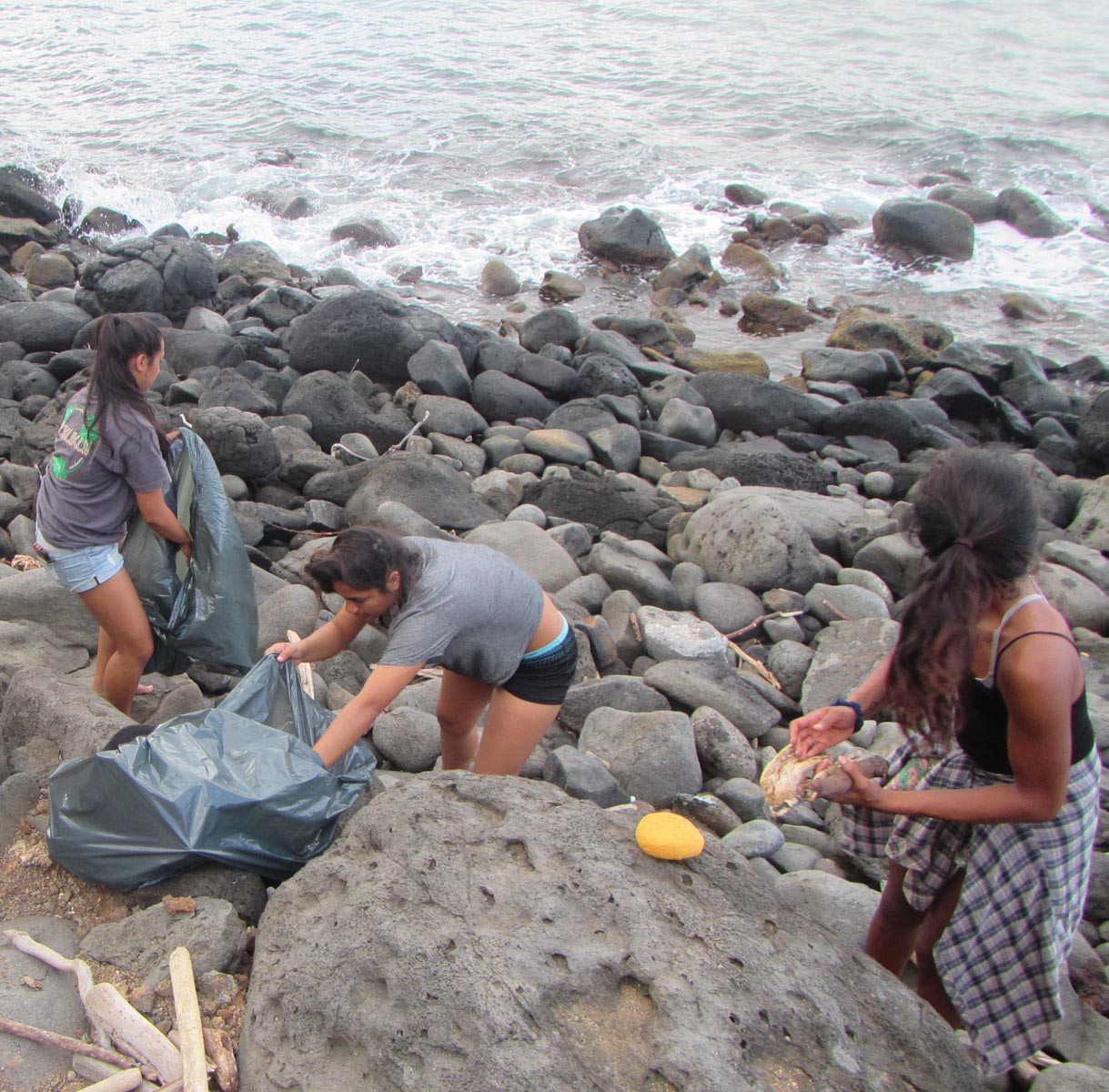
Molokai High School’s (MHS) Mākaʻikaʻi iā grant from Maui Economic Development Board’s (MEDB) Ke Alahele Education Fund provided support for the school’s O Hina I Ka Malama Hawaiian Immersion Program. “The main outcome of the grant produced a series of virtual field trips of environments on Molokai showcasing important natural and cultural resources,” said Gandharva Mahina Hou Ross, Molokai High School Hawaiian Language Immersion teacher and boys’ cross-country coach. “This curriculum model is place and culture- based and uses technology as a way of tying in the state performance standards and making education relevant. The grant gave the students the opportunity to create a website that documents the different environments on Molokai.”
Ross explained, “We took monthly field trips to various marine environments to conduct culture-based inquiry of important marine resources. Students traveled to the northwest, south and east coasts of Molokai to do shoreline monitoring. They collected samples of marine algae, marine invertebrates and marine vertebrates for further investigation in the classroom. Samples were identified with Latin, Hawaiian and common names, along with their habitat, diet, life cycle, traditional Hawaiian uses and management practices. After taking film footage on our field trip, the students used green-screen editing technique to describe what they saw.”
Funds were also used to create an internet domain for O Hina I Ka Malama’s bilingual website as a database to archive our program activities. The marine field guide will be archived on the school website that the students designed. Through the virtual field trips, the grant also enabled the students to create multimedia presentations on Molokai, at the annual MEDB Women in Technology (WIT) STEM (science, technology, engineering, mathematics) Conference, and at Hawaiian Language Immersion schools throughout Hawaii.
“I want to thank MEDB and WIT STEMworks™ for the Ke Alahele grant,” said Kauiwai Poepoe-Mollena, MHS 12th grader. “They provided us with the newest technology resources to complete our field trip tasks such as meter-square plots, ARC GIS mapping, cameras and GPS to mark points at the designated areas.”
On Saturday, August 25, 2018, MEDB will hold their annual Ke Alahele Education Fund Benefit Dinner & Auction at the Grand Wailea Resort. For more information call (808) 875-2300 or email cari@medb.org. Please join us!
Leslie Wilkins, MEDB President and CEO
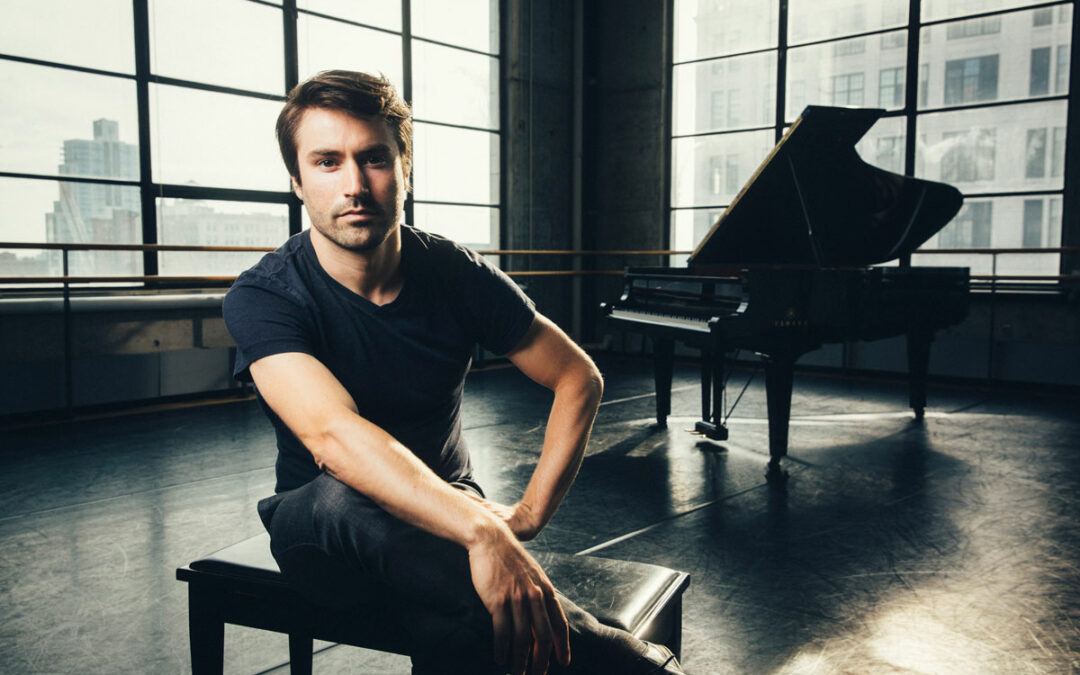
Jul 11, 2018 | Education, Innovation, Stemworks

A recent talk at the University of Hawaii’s Institute for Astronomy focused on Listening to Planetary Orbits. Dan Tepfer, master pianist and astrophysicist, said to a captivated audience, “With most things, I’ve found, what’s very interesting is not the thing in itself, but rather its relationship to other things. Everything is relative, which is why harmony, pitch, and rhythm are so stunning in the relationships among the orbits of the planets around Trappist-1, a dwarf star about 40 light years away from us.”
Tepfer told how it is only in the past 25 years that we have been able to detect planets in orbit around stars other than our own, by measuring faint dips in a star’s brightness as planets pass in front of it. What makes the Trappist-1 system unusual is the existence of harmonious relationships among its planetary orbits. The farthest planet completes an orbit every 18 Earth days and the next farthest once every 12. Tepfer explained, “In the time it takes the farthest planet to go twice around the star, the next farthest has gone around three times. This same ratio can be expressed as a musical interval, which allows us to hear the structure of the planetary system.” In other words, we can listen not only to our own solar system, but to other planetary systems as well. Tepfer used a sound synthesizer to play this and other orbital harmonic intervals for the audience, an unforgettable experience for many of those present.
“We hear sound when the air around us vibrates and those vibrations reach our ears. Vibrations are like orbits: they repeat at a certain frequency,” Tepfer said. “With the Trappist-1 system, it is not only the outer two planets that orbit in resonant harmonic relationships. Surprisingly, all seven do—the only planetary system discovered so far with so many resonant orbits. Without approximating the orbits in any way, by just presenting the data scaled up to our range of hearing, we hear what we readily identify as harmonious music.”
Trappist-1 is located 39.6 light-years from the Sun in the constellation Aquarius. Seven terrestrial planets have been detected orbiting the star, a larger number than detected in any other planetary system.
Dan Tepfer, Astrophysicist and Master Pianist

Jun 20, 2018 | Education, Innovation, Stemworks

Maui Economic Development Board’s (MEDB) Women in Technology Program (WIT) recently presented their 2nd Introduce a Girl to Astronomy Day (IGAD) for Maui girls, grades 7-8. For the past decade, MEDB and WIT have been at the forefront of providing cutting-edge STEM (science, technology, engineering, mathematics) programs across the state to meet 21st century workforce demands. “IGAD stimulates girls’ interest in astronomy as a viable and exciting career choice that requires STEM education,” said WIT Project Manager Mapu Quitazol. “It’s important to expose our girls to endless STEM opportunities and build their confidence level to know they can achieve their dreams.”
Dr. J. D. Armstrong, Maui Technology Education and Outreach Specialist at University of Hawaii’s Institute for Astronomy, agreed, “It is important to develop future leaders in our planning for Maui’s future. For example, during IGAD the students learned about the Faulkes Telescope North, a two-meter-aperture telescope that can be accessed over the internet by any students in Hawaii and globally for their science projects. Owned and operated by Las Cumbres Observatory, this unique worldwide network of robotic telescopes engages students in real science via their computers. They become active participants in a range of astronomical research projects, from observations of the solar system to distant stars and galaxies.”
Krystle Dunn, science teacher from Lahaina Intermediate, said, “I was impressed by the variety of information that students got to take in: astronomy, satellites, telescopes and hands-on activities with sensors. One of my students learned that being a part of the Air Force doesn’t always mean you have to be in combat–you can be involved through technology and other STEM fields. Many students made connections that might directly impact their future decisions.”
Jaycie Iha, Maui Waena Intermediate student, concluded, “I’m so grateful to MEDB and WIT for this chance to learn more about astronomy and engineering. IGAD was such an extraordinary and valuable experience. After visiting the observatories, I see there are opportunities for girls on Maui to reach for the stars!”
Seventy-five middle school girls from Maui County enjoyed learning about optics by touring the Maui Surveillance Space System facilities atop Haleakala.
Mapu Quitazol, MEDB WIT Program Director

May 16, 2018 | Education, Innovation, Stemworks
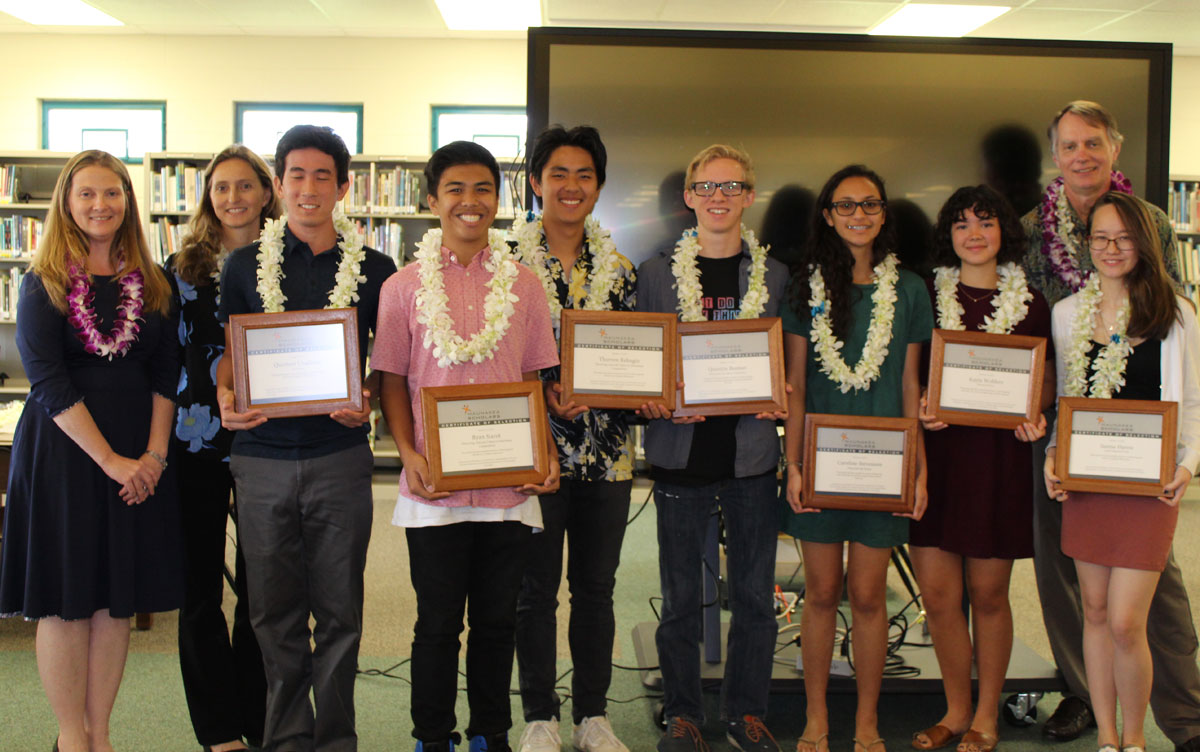
The Maunakea Scholars program, launched in 2015, created an official partnership between the Hawai’i State Department of Education (DOE), the University of Hawai’i, and Maunakea Observatories. Designed to bring Hawai’i’s high school students into one of the world’s most advanced observatory communities, the program’s third group of student astronomers are working with 10 participating international telescopes. Contributing to an innovative STEM (science, technology, engineering, mathematics) curriculum, the Maunakea Scholars provide amazing opportunities to the next generation.
The program pairs a professional astronomy mentor with students in each participating school to coach them through the process of interpreting astronomy data and crafting an original research application. The proposals are submitted to a time-allocation community for consideration, and projects are awarded highly valuable time on participating telescopes, based on the viability of the proposals.
“King Kekaulike is the first Maui school to participate in the Maunakea Scholars program,” said Emily Haines-Swatek, King Kekaulike High School MEDB STEMworks™ AFTERschool teacher. “STEMworks™ students submitted proposals to receive telescope time to conduct real research on an astronomical study of their choice. The Maunakea Scholars program partners with schools to provide observation time and summit tours. Twenty-two King Kekaulike students submitted proposals and seven students were granted telescope time during an awards ceremony on February 14th.” The King Kekaulike Maunakea Scholars and their projects are: Quinton Uradomo on Dark Matter; Janine Harris on Cepheid Magnitude Periods; Quentin Beamer on White Dwarf Formation Temperatures; Ryan Siarot and Thorren Rebiguo on Observing Asteroid Colors to Determine Composition; and Caroline Stevenson and Kayla Wholers on Deep into the Storm. The latter was awarded time on two telescopes, Las Cumbres and Canada-France-Hawai’i Telescope (CFHT).
Haines-Swatek became involved with the Maunakea Scholars after meeting with DOE and CFHT representatives at the 2017 Hawaii STEM Conference. “Because of the proximity to the Institute for Astronomy and the STEMworks™ electives taught at King Kekaulike, we make a perfect fit for the program,” she said. “The project stretched my student’s understanding of astronomy and pushed them to dream of something much larger than themselves. They are looking forward to conducting their research!”
Throughout the year, the Maunakea Scholars program supports each classroom with educational resources, including an integrated indigenous Hawaiian perspective on modern science education, led by ‘Imiloa Astronomy Center of Hawai’i.
Emily Haines-Swatek, King Kekaulike High School, MEDB STEMworks™ AFTERschool Teacher

















